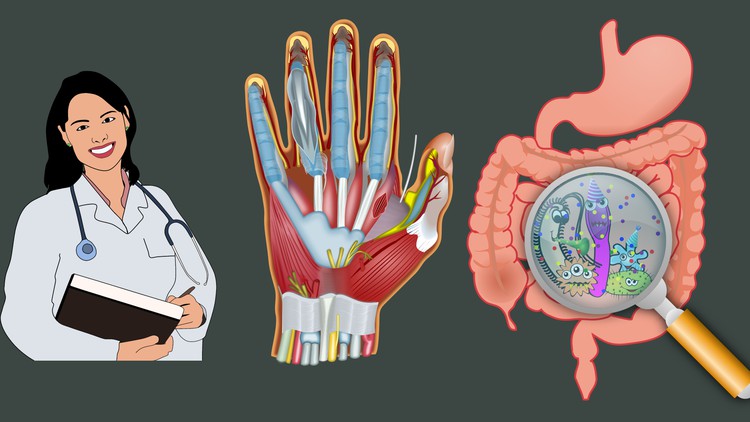Human Anatomy - Bachelor of Medicine (for MBBS, BDS, BHMS )

Why take this course?
Course Title: Human Anatomy - Bachelor of Medicine (for MBBS, BDS, BHMS)
Headline: MBBS: Human Anatomy: Regional and Applied Dissection and Clinical (Upper Limb)
Unlock the Secrets of the Human Body with Our Comprehensive Anatomy Course! 🫠✨
Course Description:
Embark on a journey through the miraculous human body with our Human Anatomy - Bachelor of Medicine (for MBBS, BDS, BHMS) course. This academic adventure is designed to equip you with an in-depth understanding of the Upper Limb's anatomical structures and their clinical applications.
What You Will Learn:
Part 1: The Skeletal Story of the Upper Limb
- Bones of Upper Limb - Explore the intricate bone structure of the arm, from clavicle to the tiny carpals.
- Pectoral Region - Dive into the muscular and skeletal framework that supports the shoulder and upper thorax.
- Axilla (Armpit) - Unravel the complex web of vessels, nerves, and lymphatics housed in this vital region.
- Scapular Region - Understand the anatomical marvel of the shoulder blade and its surrounding muscles.
- Arm - From the deltoid to the biceps, learn about the muscles that enable arm mobility.
- Forearm - Discover the powerful forearm muscles and their role in gripping and fine motor skills.
- Joints of Upper Limb - Delve into the biomechanics of the elbow, wrist, and finger joints.
Part 2: Beyond Bones - The Soft Tissues of the Upper Limb
- Muscles - Grasp the functions of over 650 muscles in the upper limb.
- Nerves - Trace the paths of the brachial plexus and understand their sensory and motor roles.
- Blood Vessels - Study the extensive network of arteries, veins, and capillaries that nourish the upper limb.
- Lymphatics - Learn about the lymphatic drainage of the arm and its clinical importance.
- Organs - Examine the chest organs adjacent to the pectoral region.
Human Anatomy: A Voyage Through Time Anatomy is one of the cornerstones of medical science, encompassing both macroscopic and microscopic aspects. Macroscopic anatomy involves the study of the body's structures without the aid of magnification, while microscopic anatomy requires optical instruments to examine tissues at a cellular level (histology) or cells themselves.
The human body's complexity is astounding: it comprises approximately 206 bones, 650 muscles, 79 organs, and enough blood vessels to encircle the Earth twice! Medical schools dedicate an entire academic year to understanding these structures, but what exactly does human anatomy entail?
The Essence of Anatomy: From Past to Present The discipline of anatomy has its roots in ancient Egypt and has been meticulously developed by pioneers like Galen, Leonardo da Vinci, and Andreas Vesalius. Their contributions have shaped our understanding of human anatomy from philosophical contemplations to empirical evidence.
In this course, we will explore the evolution of anatomy and its significance in modern medicine. You'll learn how to approach anatomy studies effectively and how to apply your knowledge in clinical settings. By mastering the principles of human anatomy, you'll lay a solid foundation for a successful career in medicine.
Why Study Human Anatomy? Understanding human anatomy is crucial for aspiring medical practitioners, as it provides insights into human physiology and pathology. This course will guide you through the complexities of the Upper Limb with a blend of theoretical knowledge and practical applications. 👩⚕️💫
Join us on this anatomical expedition and transform your understanding of the human body! Whether you're an MBBS, BDS, or BHMS student, our course is tailored to enhance your academic journey in medicine. Sign up today and embark on a lifelong learning adventure in human anatomy! 📚🚀
Loading charts...